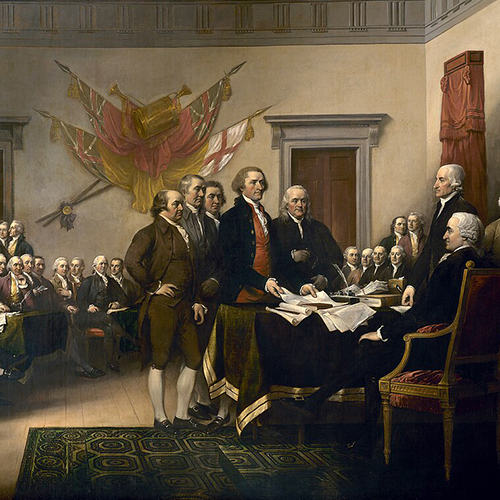
Declaration of Independence (detail) by John Trumbull, 1819
Great art is timeless, and speaks across time, culture, and space. Yet great works come from real people living real lives—whether their work was made 5 minutes or 500 years ago. Popular Smithsonian Associates speaker Paul Glenshaw returns to the Art + History series to look at great works of art in their historical context. He delves into the time of the artist, explores the present they inhabited, and what shaped their vision and creations.
John Trumbull’s Declaration of Independence is an icon of American history reprinted millions of times in textbooks, commemorative posters, $2 bills, and much more. But is the painting accurate? What happened on July 4, 1776, and what event does the painting purport to show?
Like today’s movies “based on a true story,” Trumbull arranged the characters for maximum dramatic effect. The painting’s history is also a surprise: the composition was conceived by Trumbull with Thomas Jefferson’s direct influence. Additionally, the painting was begun in Paris—part of a commercial scheme that failed miserably—with the mural-size version in the United States Capitol Rotunda completed almost 40 years after the original smaller painting was begun.
Glenshaw presents two narratives in tandem: the story of the Declaration of Independence and the events preceding and directly after July 4th, 1776, and how those events ultimately intersected with Trumbull’s multifaceted career, a soldier, artist, and diplomat who was on a first-name basis with the founders of the country.
Additional Art + History Programming
General Information